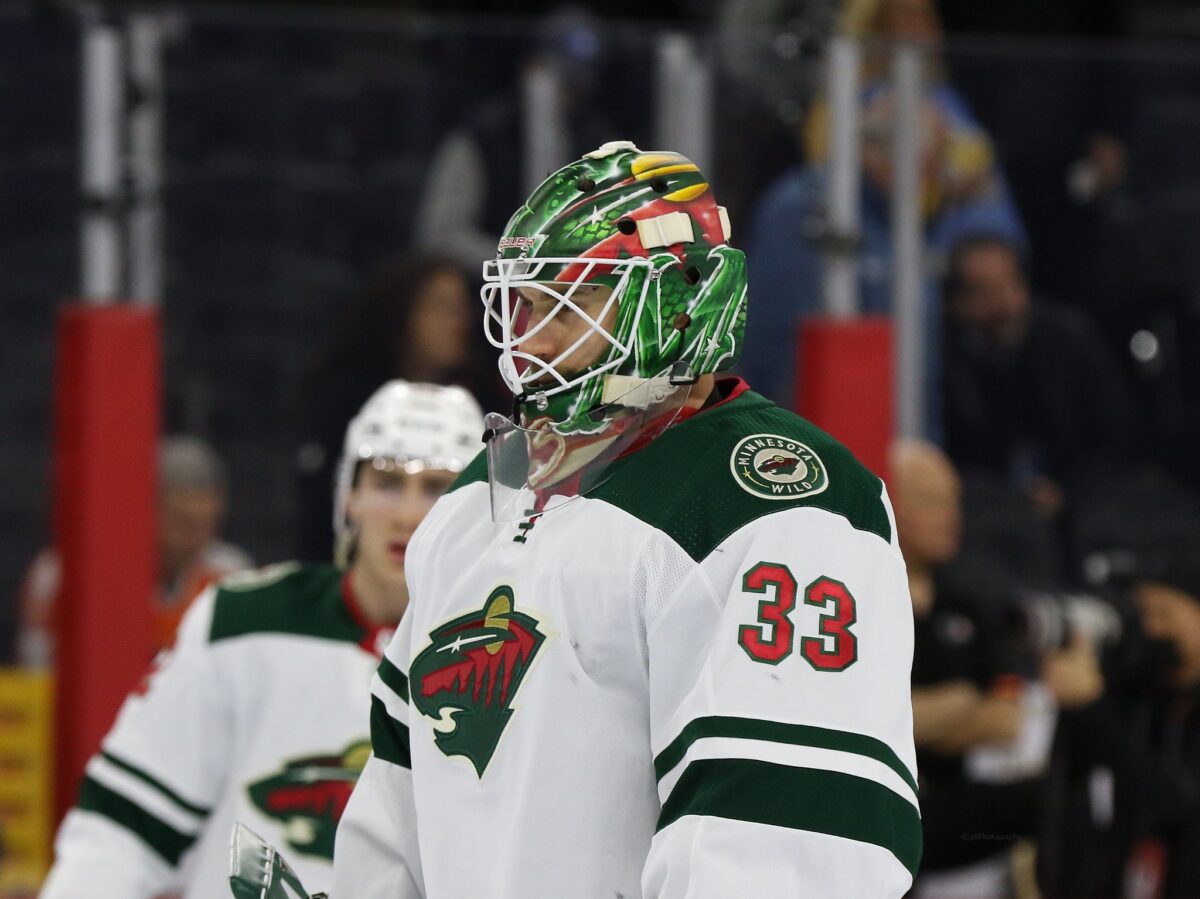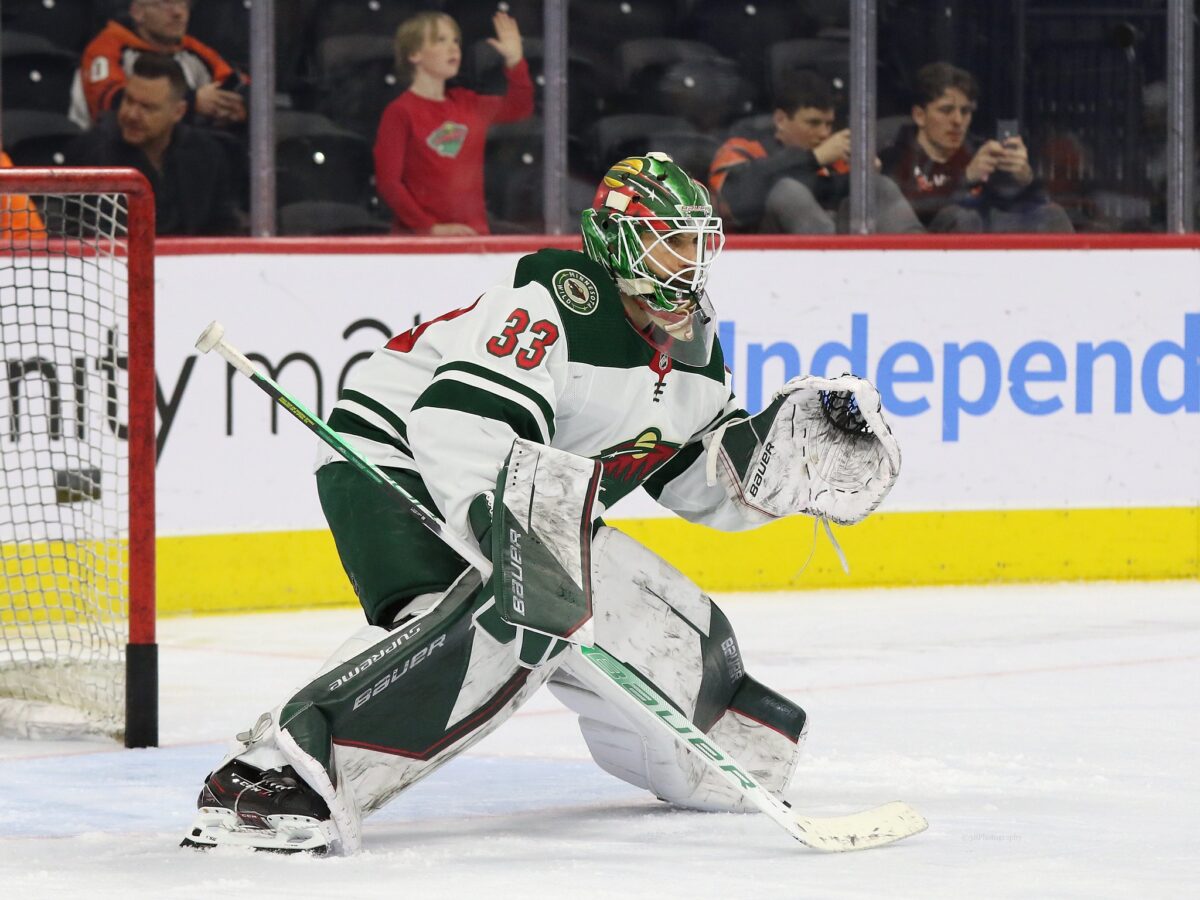Now that all the players who played 15 or more games for the Minnesota Wild have been graded (with the exception of the two that were traded) it’s time to get to the most criticized position in all of hockey: the goaltenders. It’s only courteous to start with Wild veteran, Cam Talbot as he was the starter for most of the season.
When the season first began, Talbot was basically given the starting spot, while sharing the net with Kaapo Kahkonen until he was injured. Once Talbot returned, they shared the net a little more regularly until the 2022 NHL Trade Deadline came around and Kahkonen was sent to the San Jose Sharks. Then came Marc-André Fleury from the Chicago Blackhawks. Talbot and Fleury rotated games from that moment forward until the postseason began.
Talbot’s Decent Season
Goaltenders can make or break a team and Talbot definitely saved his team a number of times this season. With that being said, he also had games where he let in far too many goals as well. It was an up and down season, but overall the regular season ended on a decent note for him as he played in 49 games and 48 of those were games he started that wasn’t in relief of someone else. For fans who followed the Wild, everyone knows that Talbot went down right after the Winter Classic with a lower-body injury that lasted nearly the entire month of January.
Talbot missed out on playing in five games during that time but he ended up being the backup on Jan. 22 before he started the next game on Jan. 24. It seemed like he entered the lineup pretty fast after having a lower-body injury. As a goaltender, those types of injuries can be devastating, but thankfully he appeared to be fine and went on to play the rest of the season without issue. He had a record of 32-12-4, the second-most wins he’s had in his nine-year career. His highest was 42 wins in 2016-17 when he was a member of the Edmonton Oilers.

This season, Talbot finished 10th in the league with those 32 wins, along with an overall save percentage (SV%) of .911 and a goals-against average (GAA) of 2.76. His save percentage was pretty decent and his goals-against average has been typically high throughout his career but it needs to improve going forward, as there was a streak where he let in four or five goals a game and that’s just too many for a starting goaltender.
Obviously, Talbot has a team in front of him and some of those goals were not his fault, but things should’ve been better. He had a pretty good end to the regular season and many fans were left with the impression that he should’ve started the postseason instead of Fleury.
Talbot’s One-Game Postseason
While everyone in the Wild locker room had a frustrating postseason, Talbot’s may have been one of the most disappointing. He didn’t play until Game 6 and had to watch while his team struggled through Games 3, 4, and 5. Then when Game 6 came around and he started, it was expected he’d pull off some sort of miracle to get them through to Game 7. Obviously, it’s great they had that much confidence in him but it’s also a lot of pressure to be put under when he hadn’t played a game in nearly two weeks.
Related: Wild’s Lack of Desperation Costs Them Their Season, Loss in Game 6
As everyone knows and it’ll be continuously talked about until next season starts up, they lost Game 6 and therefore were eliminated. In all fairness, Talbot did have a rough game, as he let in four goals and had a .846 SV%, however his whole team struggled and that just exploited him even more. Could he have done better? Most definitely, but again he doesn’t deserve all the blame.

If Talbot had played more than just Game 6, would the Wild have done better? We’ll never know, but it’s entirely possible since Fleury seemed to struggle as the series went on. It’s also hard to pull a goalie that the team traded for with the intent that he would be their playoff guy. Basically, it was a tough situation all around.
Talbot’s Final Grade
While the Wild’s season ended in failure, their regular season was quite impressive and Talbot was a big reason for that success. After the season he had and coming back from an injury, his grade is a B. Clearly, he made some mistakes but the Wild wouldn’t have gotten to the postseason without him. Fleury was a great partner to tandem with after the trade deadline, but Talbot was there the entire season.
The Wild’s front office staff has made it clear they intend to keep Talbot and also want to try and re-sign Fleury to have another chance with this pair in 2022-23 since they seemed to work very well together. He has one more season left on his contract with the Wild and unless something drastically changes, he’ll remain with the team to close out that deal. Hopefully, he can improve his wins and maybe hit number 43 next season. Regardless, the Wild know what they’re getting with Talbot and hopefully, he’ll have a chance at another postseason in 2023.